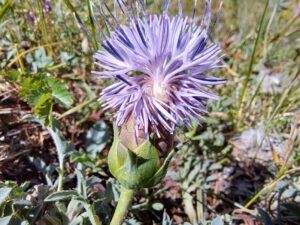How to Propagate Carthamus mitissimus

Taming the Tiny Thistle: A Guide to Propagating the Delicate Beauty, Carthamus mitissimus
The world of botany holds a dazzling array of plants, each with its own captivating charm. Among these is Carthamus mitissimus, a charming thistle relative boasting delicate, pale yellow blooms. Don’t let its association with prickly thistles fool you; this species is a gentle beauty, adding a touch of understated elegance to any garden. But how do you bring this botanical gem into your own outdoor haven? Let’s delve into the art of propagating Carthamus mitissimus.
Starting from Seed: Embracing the Cycle of Life
The most common and rewarding propagation method for Carthamus mitissimus is starting from seed. This process allows you to witness the entire life cycle of this unique plant, from tiny seed to flourishing flower.
Here’s a step-by-step guide:
- Seed Collection: If you’re lucky enough to have an existing plant, allow a few flower heads to mature and dry completely on the stalk. These will turn brown and release seeds easily when gently rubbed.
- Sowing Time: The ideal time for sowing is in early spring, after the last frost has passed.
- Preparing the Soil: Carthamus mitissimus thrives in well-drained soil. Use a seed-starting mix or amend your garden soil with sand or perlite for better drainage.
- Sowing the Seeds: Scatter seeds thinly over the soil surface, gently pressing them in.
- Watering with Care: Use a gentle watering method to avoid disturbing the seeds. Keep the soil consistently moist but not waterlogged.
- Light and Warmth: Place your seed trays or pots in a warm, sunny location. A south-facing windowsill or a greenhouse are excellent choices.
- Germination: Be patient! Germination can take anywhere from 2 to 4 weeks.
- Transplanting Time: Once seedlings develop a few sets of true leaves, they are ready to be transplanted into individual pots or directly into the garden.
Other Propagation Techniques: Exploring Alternative Routes
While starting from seed is the most prevalent method, Carthamus mitissimus can occasionally be propagated through other techniques:
- Division: Mature plants may form clumps that can be carefully divided in early spring or fall. This method ensures quicker establishment compared to starting from seed.
- Cuttings: Although less common and slightly more challenging, taking basal cuttings in late spring can be successful. It’s crucial to use a rooting hormone and maintain high humidity levels for success.
Caring for Your Carthamus mitissimus: Fostering Healthy Growth
Once established, caring for this captivating plant is relatively effortless. Carthamus mitissimus enjoys full sun to partial shade and well-drained soil. It’s relatively drought-tolerant once established but benefits from occasional watering during dry spells. Deadheading spent blossoms encourages continuous blooming throughout the season.
Remember, patience is key when cultivating Carthamus mitissimus. With a little care and attention, you can successfully propagate and enjoy the subtle beauty of this captivating thistle relative in your own garden. So, go ahead, embrace the challenge, and add a touch of delicate charm to your outdoor space.